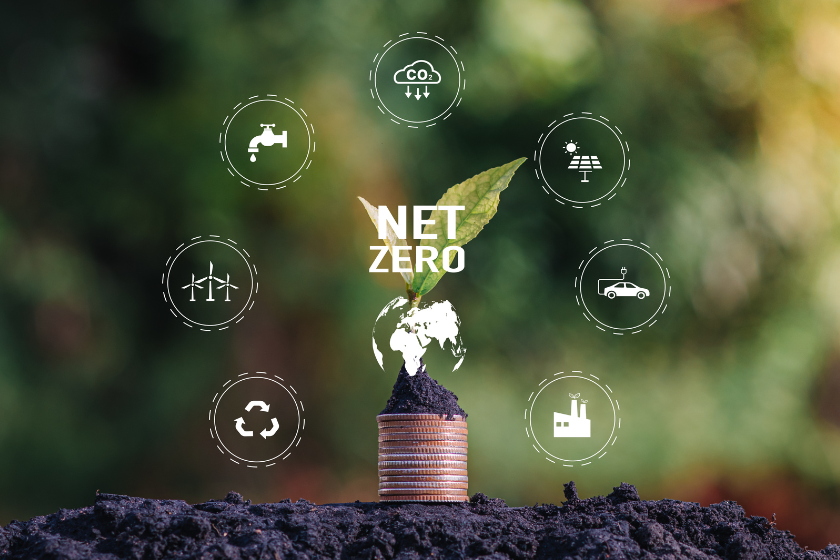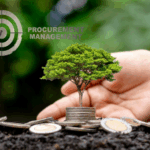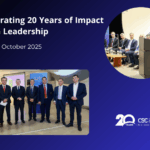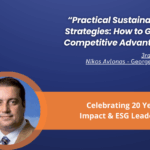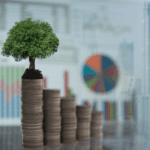As someone who has spent over two decades working at the intersection of sustainability, business strategy, and ESG innovation, I see the EU 2030 climate target ESG strategies as a pivotal challenge—and opportunity—for professionals today. This is more than policy—it’s a wake-up call for ESG professionals, and an opportunity to lead the charge in redefining how organizations operate in the face of climate urgency.
In this article, I’ll share my personal reflections on why this moment matters and what I believe ESG professionals must do to stay not just compliant, but relevant—and impactful—in this new era.
Why the EU 2030 Climate Target Is a Turning Point
The EU has already cut greenhouse gas emissions by 32.5% compared to 1990 levels—a remarkable achievement. But the path ahead is even more ambitious: a minimum 55% emissions reduction by 2030 and full climate neutrality by 2050.
These goals are not aspirational—they’re binding. Underpinning them are regulatory tools like:
- Corporate Sustainability Reporting Directive (CSRD)
- European Sustainability Reporting Standards (ESRS)
- The EU Climate Law
As I often tell my clients and colleagues: this is not just about reporting—it’s about transformation.
ESG Is No Longer a “Nice to Have”
I’ve worked with countless organizations that once treated ESG as a siloed initiative—something handled by a small team, separate from strategy. That approach is no longer viable.
With mandatory disclosures, double materiality, and value chain due diligence now part of EU regulations, ESG must become part of the business DNA. And it’s not just the EU. Globally, we’re seeing the harmonization of sustainability reporting with financial performance, led by:
- IFRS S1 and S2 standards from the International Sustainability Standards Board (ISSB)
- Global alignment with the TCFD and GRI frameworks
This is reshaping investor expectations. Transparency, comparability, and credibility are the new currency in ESG communication.
My Strategic Advice: 5 Ways ESG Professionals Can Lead in 2030
Drawing from my advisory work, academic involvement, and conversations across sectors, I believe ESG professionals must focus on five strategic priorities:
- Understand—and Own—the Frameworks
You don’t need to memorize every line of the CSRD, but you do need to:
- Understand which ESRS standards apply to your organization
- Prepare for assurance requirements
- Educate internal teams early, especially finance and legal
- Go Beyond Box-Ticking in Materiality Assessments
A credible ESG strategy starts with materiality—but I see too many companies treat it as a compliance exercise.
- Develop Climate Risk Foresight
This is where ESG becomes strategy.
Scenario analysis and transition planning are vital to understanding:
- How climate change impacts your operations and supply chain
- What opportunities exist in decarbonizing your sector
Use tools like TCFD-aligned scenario planning or Net Zero Roadmaps to guide decision-making.
- Use Digital Tools, but Don’t Let Them Replace Thinking
Tech platforms like Workiva or Persefoni can streamline ESG data management. But no tool can replace judgment, especially when navigating ambiguity or stakeholder pressure.
ESG professionals need to balance automation with interpretation.
- Align ESG with Strategy, Not Just Reporting
This is where leaders differentiate themselves.
- Embed ESG KPIs into executive incentives
- Link capital allocation to emissions or diversity targets
- Use ESG insights to identify new business models or markets
From the Field: A Real-World Shift I’m Seeing
One of the companies I advise—a European industrial manufacturer—started preparing for CSRD in 2023. What impressed me wasn’t just their technical readiness, but their cultural shift.
They didn’t treat ESG as a cost center. Instead, they embedded it into:
- Product development
- Supplier engagement
- Executive decision-making
As a result, they’re now attracting ESG-linked financing, reducing operational risk, and improving their brand reputation in key markets.
Final Thoughts: The Role We Must Play
The EU’s 2030 climate agenda is more than legislation—it’s a mandate for systems change. And ESG professionals, in my opinion, are among the few positioned to bridge the gap between regulation and resilience.
We’re not just translators of policy—we’re strategic advisors, educators, and sometimes, change catalysts.
If we embrace this role fully—grounded in data, guided by values, and connected to strategy—we can help shape a business world that is not only compliant, but climate-resilient and future-fit.
